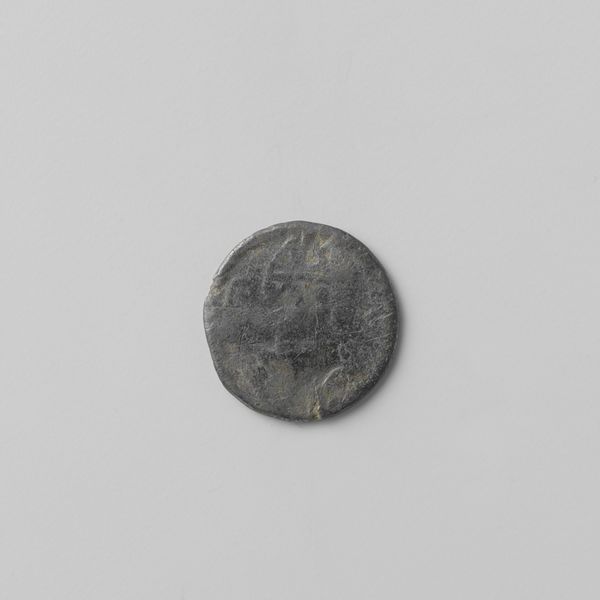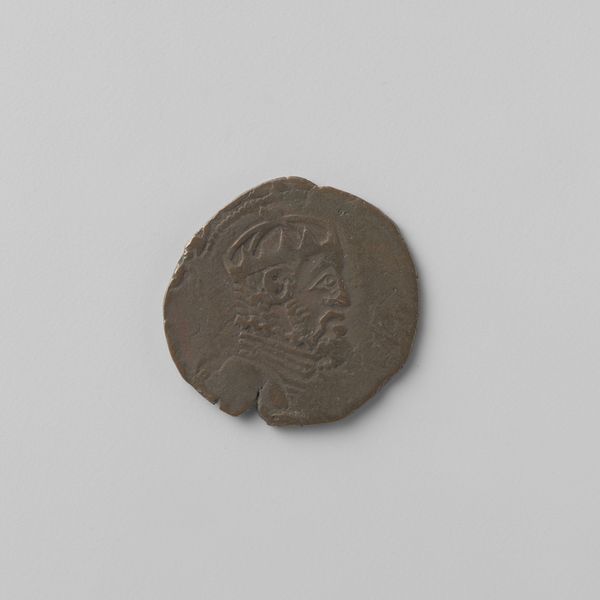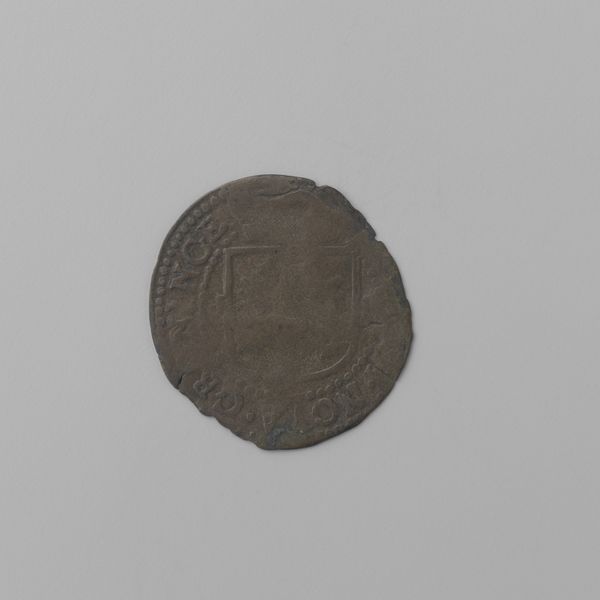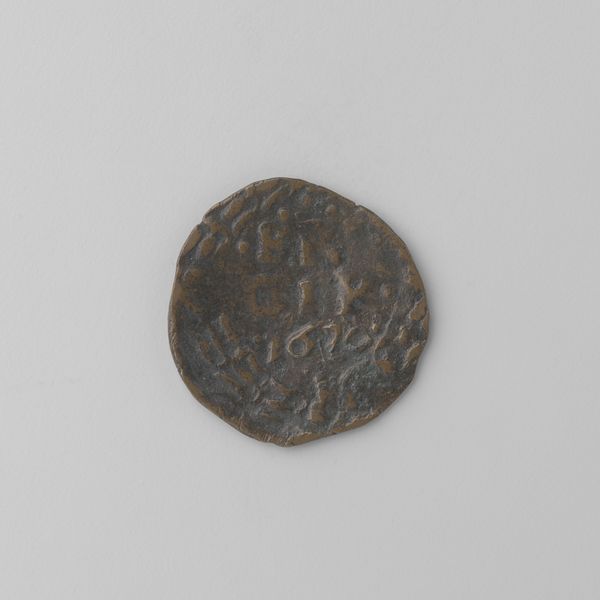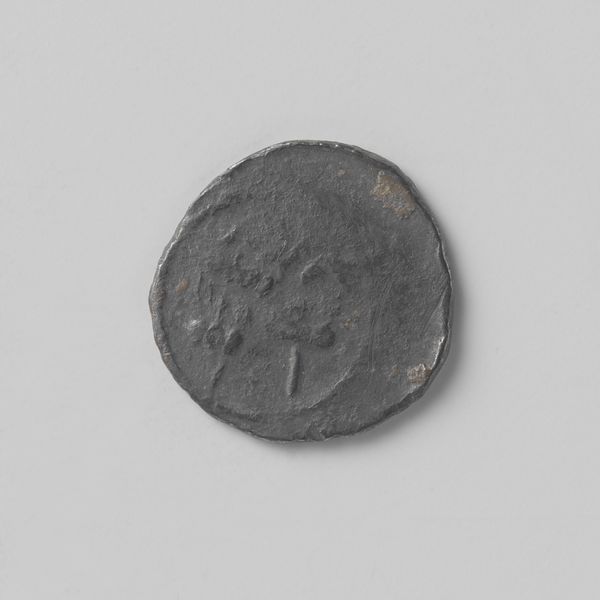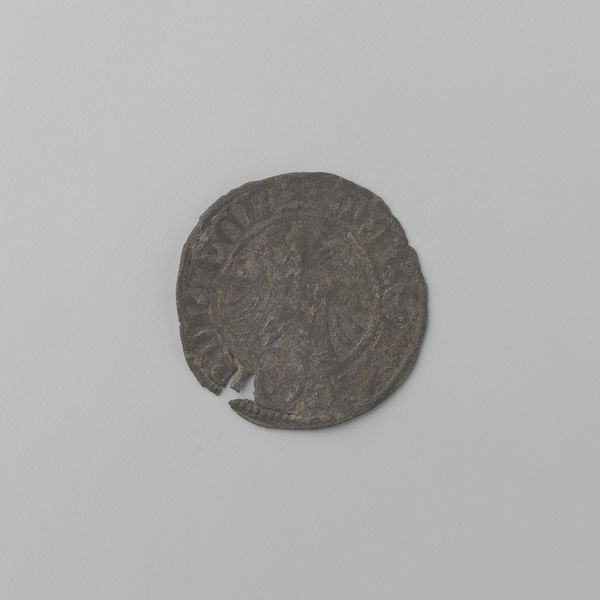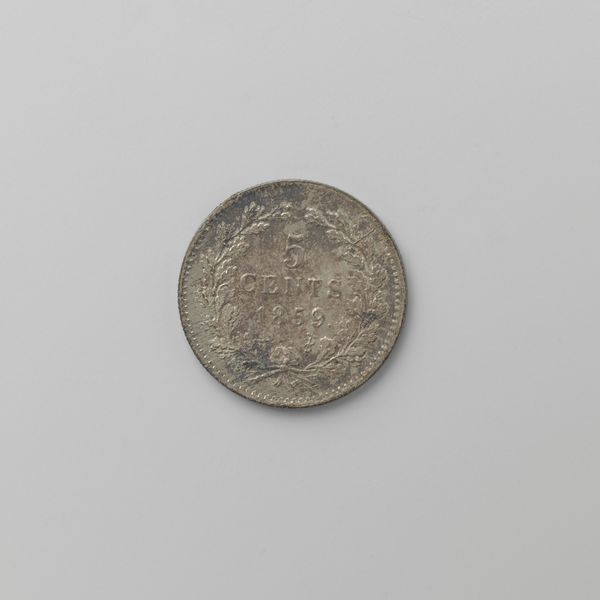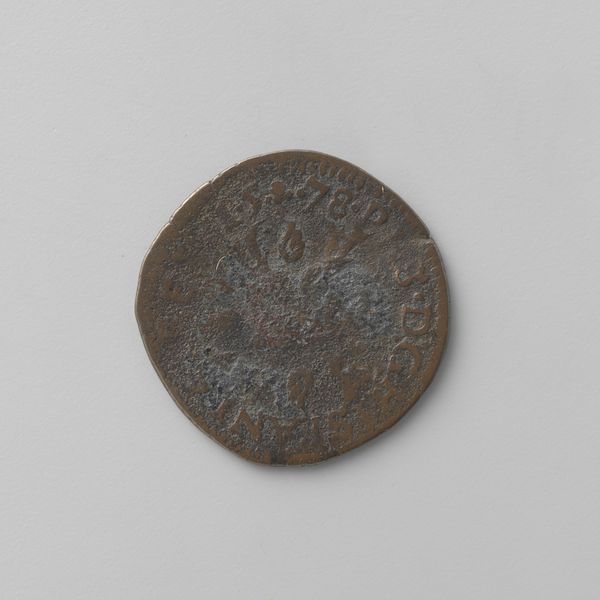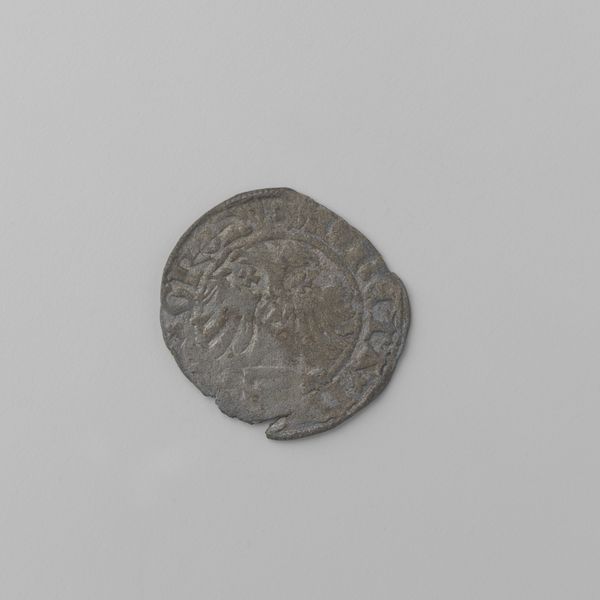
metal
#
portrait
#
metal
#
ancient-mediterranean
Dimensions: diameter 2.7 cm, weight 4.57 gr
Copyright: Rijks Museum: Open Domain
Editor: Here we have a metal coin, titled "Zeeuwse statenoord," dating from around 1580-1583. The material's aged appearance gives it a sombre, almost melancholic quality. What strikes me is the bas-relief portrait – how would you interpret its composition? Curator: The incuse portrait, while limited in its dimensional scope, speaks volumes through line and form. Note the strong profile: the deliberate arc of the nose, the set of the jaw. These choices signify power and authority. But, the circular shape and metallic composition serve to contain, to control, and to standardize this representation of power. Consider also the distribution of light and shadow across the surface. Does it contribute to a sense of depth or flatten the image? Editor: I see how the play of light does add depth, making the figure more imposing despite the coin's small size. So, the portrait and the material contrast in effect? Curator: Precisely. There's an inherent tension. The coin as a medium invites reproducibility and dissemination, whereas the individualized detail of the portrait hints at a unique identity, even an elevation of the figure above the common masses. Note too the wear and tear – the imperfections disrupting the original form. What narrative does this degradation suggest? Editor: Perhaps that time erodes even the most carefully constructed images of power, or that repeated handling slowly dissolves the impression it holds? That contrast between creation and destruction is intriguing. Curator: Indeed. The object is a site of these competing visual forces and processes. Editor: That’s fascinating! Thinking about it this way really makes me see the coin as more than just currency. Curator: My thoughts exactly, as a formal construction, it goes far beyond being a mere functional object.
Comments
No comments
Be the first to comment and join the conversation on the ultimate creative platform.
